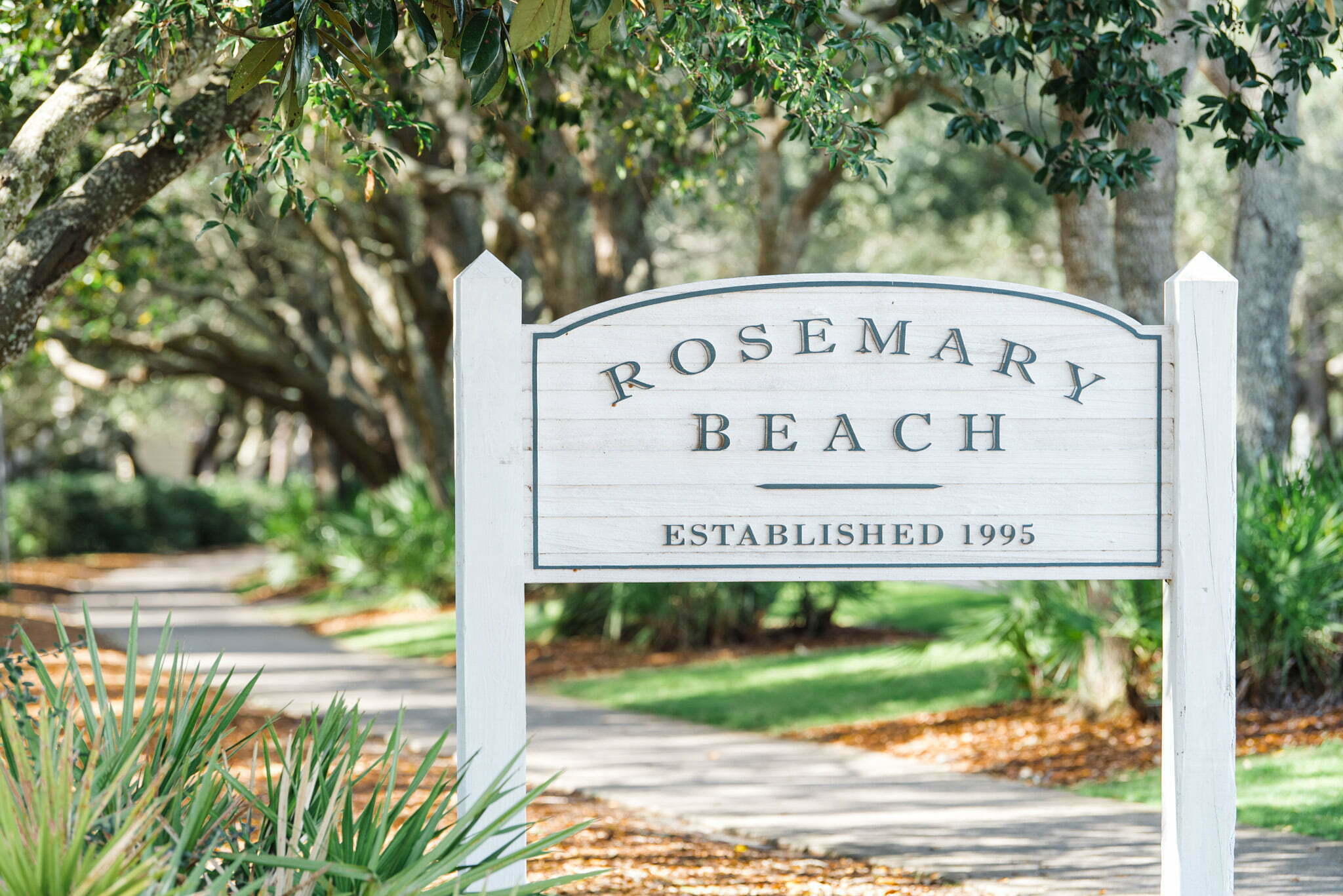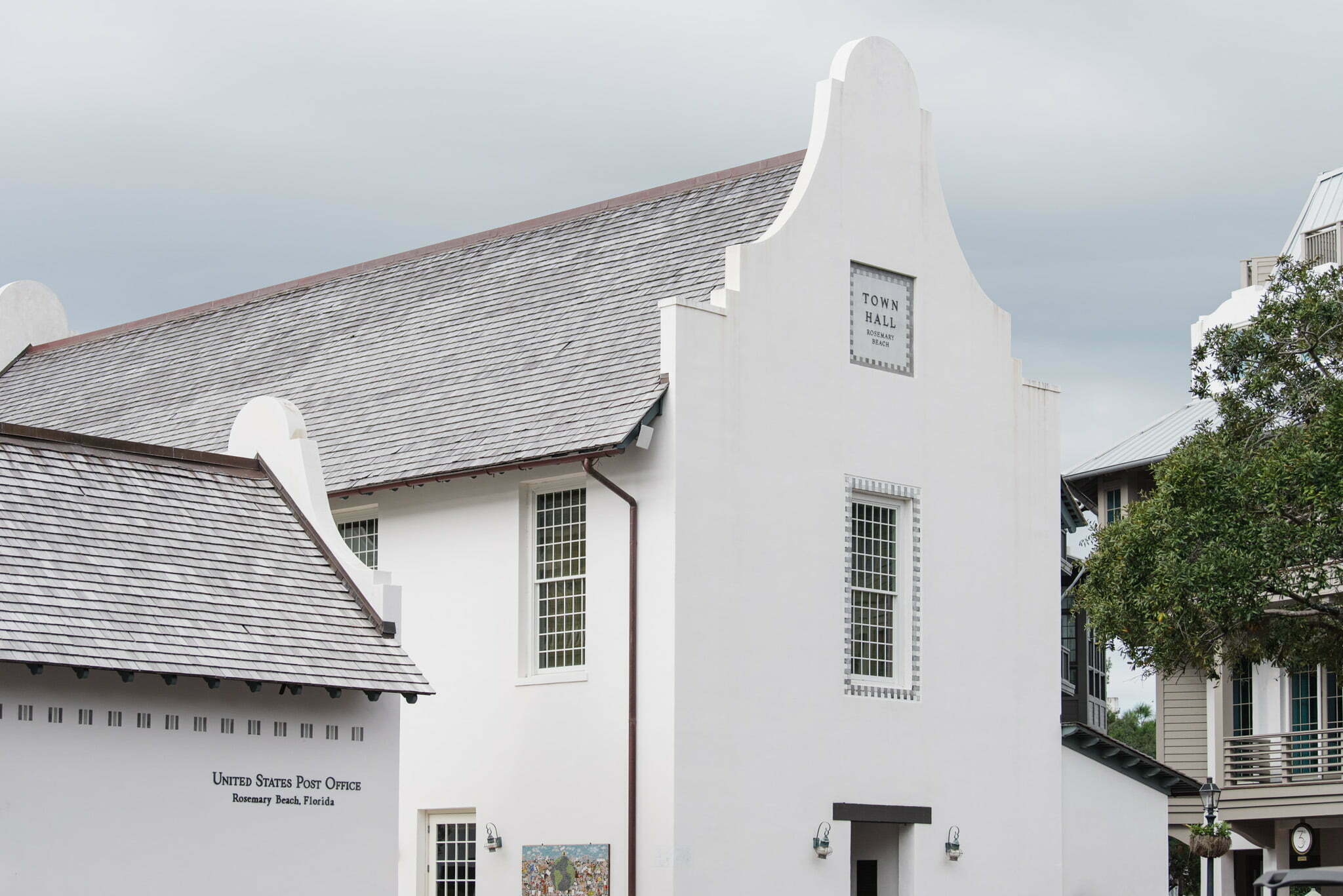Our History

In 1995, the Rosemary Beach Land Company and President Patrick Bienvenue shared a vision of creating a community that enveloped neighborhood living and daily conveniences. Through insight from planning pioneers, Andres Duany and Elizabeth Plater-Zyberk (also known as founders of the firm DPZ, the husband-and-wife team that brought international prominence to Seaside) this team set out to form a master plan for development inspired by other classic beach towns.
Their reality came to life along 107-acres situated on the Gulf of Mexico and beautiful Scenic County Highway 30-A, with the idea that breathtaking architectural design and unique house plans could blend into the natural coastal features of the landscape and exemplify neighborhood values of another time. Think back to a time when neighbors knew each other and walking to the store was the best way to travel. The master plan soon took formation to replace grid-locked with encouraged pedestrian traffic, urban sprawl with community interaction and interdependence and unite workable neighborhoods with shops, restaurants, galleries. Sound familiar? This development team was once again setting the stage for another masterfully planned community through the vision of New Urbanism.
While their vision may not seem revolutionary today, it was quite unconventional for 1995. For decades, people had been leaving the city for the dream of a picture-perfect life in suburbia. The proponents of New Urbanism wanted to re-invent “Old Urbanism” and reform real estate development expectations to raise the bar to enjoy a better quality of life.
A Meeting of the Minds
In 1997, the design team convened again to plan for the expansion of Rosemary Beach to the newly acquired land on the north side of 30-A. To keep within set-back requirements set by Walton County and the planning committee’s own restrictions for scale, the team created the East and West Long Green Parks to run the length of the town. Next to the Rosemary Beach Town Hall, anyone passing through immediately notices these beautiful focal points of Western Green and Eastern Green. Those living here or visiting the town make good use of the lawns for meeting spots and play! Through the years, Rosemary Beach has made space for additional parks including, North and South Barrett Square. Playground Park, East and West Kingston Parks, Knightsbridge Park, Bridgetown park with its recognizable trellis, and our most expansive, St. Augustine Green large enough for the entire town to gather. Additionally, there are several smaller parks along a quiet boardwalk on the North side of town that are like a jeweled necklace. Triangle Park, Atticus Park, Wiggle Park, Hedgelong Park and Fountain Park provide intimate spots for a rest while strolling, a casual conversation or quiet reflection.
With their vision defined, the team planned to formulate a Master Plan for Rosemary Beach. The first meeting was held in 1995 and then Seaside Town Architect, Richard Gibbs, led the team with a small, but very important architectural prototype – a carriage house. Yes, Rosemary Beach architecture was initiated from a small guest house! The initial charrette, or brainstorming session, identified what we now know as the critical elements or Rosemary Beach architecture including: European Colonial influence of the West Indies and Caribbean, natural color palates, sustainable materials, Dutch architectural details, island living features like high ceilings for better air circulation.
Once the scale challenges were resolved through the conception of the East and West Long Green Parks, the team moved to the most important part, creation! A “Come Build a Town with Us” visioning opportunity was created offering images and inspiration of what Rosemary Beach would look like among many square acres of Florida scrub. The first two family residences were completed in 1997 Across from the newly created Coquina Pool and on East Water Street. Over the next 25 years neighbors heard the call of “Come Build a Town with US” and created the town we see today.

What Makes Rosemary, Rosemary?
Just as it was the inspiration, the first structure built in Rosemary Beach was a carriage house. The Rosemary Beach Planning Team came from a simple concept of a better way of living to implementing this vision and more into what we now know as Rosemary Beach. At the foundation of that concept and those first meetings is the Town Hall with its white stucco exterior and Dutch West Indies parapet roof, high ceilings, grand meeting spaces and lawn area. The Town Hall was completed in 1999 and is at the center of the community. The planning committee achieved its goal of a coastal, New Urbanism community by creating a vision of a unique neighborhood which preserved natural elements around it, the architecture within it and the connecting paths and boardwalk which link it all together. The fulfilment of that vision can be seen in the vibrant Town Center that was crafted, the unique homes that line every street and boardwalk and the community that was created allowing residents and visitors to experience a better way of living.
Together with its owners, the Rosemary Beach POA works to maintain the parameters and specifications set by the original founders and mirror that vision even over 25 years later.